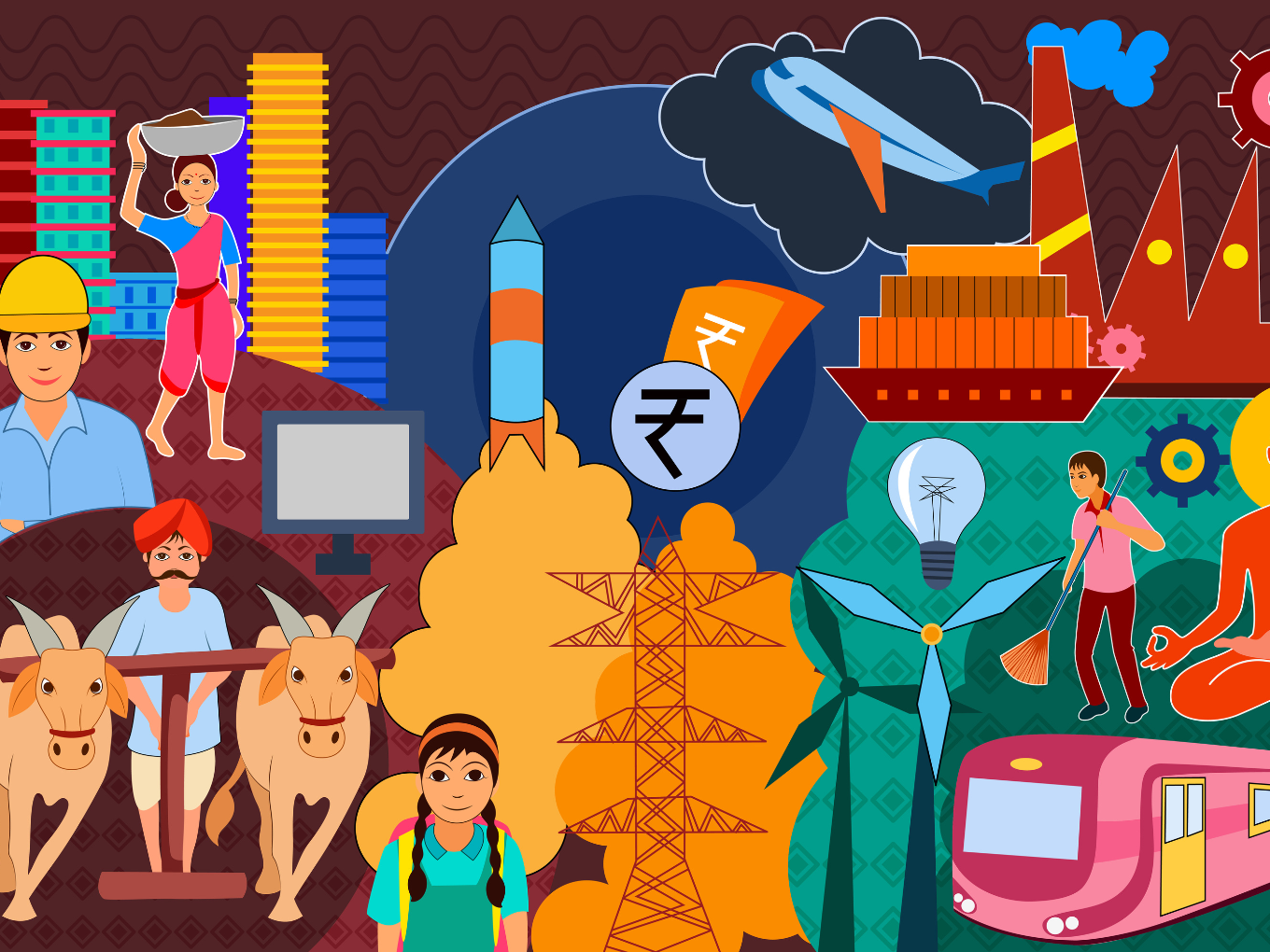From Make in India to Innovate in India: How India is Reshaping the Global Tech Landscape 2023

From Make in India to Innovate in India: How India is Reshaping the Global Tech Landscape 2023
During a recent speech, the chairman of HUL outlined several factors that could help India surpass Japan and Germany to become the world’s third-largest economy by 2027. He said these include a favourable demographic profile, rising consumption, an enviable digital public infrastructure, investments, and a culture of innovation and enterprise.

In a world grappling with numerous challenges, India has emerged as a beacon of hope and a silver lining amid global headwinds. The Chairman of Hindustan Unilever Limited (HUL), one of India’s largest consumer goods companies, recently highlighted India’s potential to lead the fourth industrial revolution. This article explores the reasons behind this optimism, delving into India’s strengths, initiatives, and the transformative potential of the fourth industrial revolution.
India is the bright spot and is ready to leapfrog into the future against the global headwinds and complicated background, said Nitin Paranjpe, Chairman, Hindustan Unilever Limited, addressing the 90th Annual General Meeting. A favourable demographic profile, rising consumption, an enviable digital public infrastructure, investments, and a culture of innovation and enterprise, he said, will be the driving forces behind India’s journey to overtake Japan and Germany and become the third-largest economy in the world by 2027. During his speech titled “Transforming to Win in the New India,” he expressed that India’s goal of becoming a high-middle income country by 2047, which marks the nation’s 100th year of independence, is a realistic aspiration.

He said that a growing youthful population might frequently result in a growing economy and that India, which has one of the highest populations of young people in the world, will gain in the future from its demographic dividend. According to him, the country will eventually house one-fifth of the world’s workforce, given that 66% of its population is under 35 and 40% is between the ages of 13 and 35.

India has shown remarkable resilience by bouncing back and adapting despite facing challenges like the COVID-19 pandemic and economic disruptions. Its young demographic profile, with a significant proportion of the population under 35, is a crucial factor in India’s potential to lead the fourth industrial revolution. This youthful workforce possesses the necessary skills, enthusiasm, and adaptability to embrace emerging technologies and drive innovation.
India’s digital transformation journey has been impressive. The country has witnessed unprecedented internet penetration, smartphone adoption, and digital infrastructure development. The government’s ambitious initiatives, such as Digital India and Make in India, have further accelerated the nation’s digital progress. This digital revolution has created a conducive environment for innovation, entrepreneurship, and the widespread adoption of advanced technologies.

India’s vibrant startup ecosystem has garnered global attention. With the third-largest startup ecosystem globally, India has become a breeding ground for disruptive technologies and transformative business models. Startups in various sectors, including fintech, edtech, health tech, agritech, and e-commerce, have flourished, attracting significant investments and fostering a culture of innovation. With access to capital and a large domestic market, this entrepreneurial spirit has positioned India as a prime destination for technology-driven solutions.

The Indian government has proactively fostered an environment conducive to the fourth industrial revolution. Initiatives like the National Policy on Electronics, Atmanirbhar Bharat (Self-Reliant India), and Startup India have focused on boosting domestic manufacturing, encouraging innovation, and providing a supportive ecosystem for entrepreneurs. India has taken a step forward in the fourth industrial revolution by implementing policies that encourage the use of emerging technologies such as AI, blockchain, and IoT.

India has witnessed significant advancements in emerging technologies such as AI, machine learning, robotics, and automation. Leading technology companies and multinational corporations have established research and development centres in India, recognizing the country’s potential as an innovation hub. The country’s top-tier educational institutions also produce a steady stream of skilled graduates in science, technology, engineering, and mathematics (STEM) fields, fueling the innovation ecosystem.
The fourth industrial revolution holds immense potential for India to drive inclusive growth and sustainable development. By leveraging emerging technologies, India can address poverty, healthcare, agriculture, and infrastructure development challenges. Applying AI and big data analytics can improve healthcare outcomes, enhance agricultural productivity, and optimize resource utilization. Moreover, the digital revolution can bridge the urban-rural divide, bringing essential services and opportunities to remote areas.
Additionally, India is seeing a significant increase in consumption, attributed to rising prosperity, urbanization, and the expansion of the nuclear family. Nitin Paranjpe stated that while India missed out on the first and second industrial revolutions and was too young to benefit from the third, it is now well-positioned to lead the fourth industrial revolution. He was speaking about India’s digital public infrastructure. With more than 750 million internet users, India is currently the world’s largest and fastest-growing market for digital consumers. According to him, that number is projected to reach 900 million by 2025.

And he said that investors chose India as a location for their money. “Several policy decisions by the Government, including banking reforms, Production Linked Incentive (PLI) schemes, Foreign Direct Investment (FDI) policy, implementation of the Goods and Services Tax (GST), and initiatives such as Skill India and Digital India, provide a fertile ground for investors,” Nitin Paranjpe said during his speech.

Additionally, the HUL chairman praised India’s innovative and entrepreneurial culture. “The nation’s startup ecosystem is quickly growing, and it is one of the most significant drivers of innovation. In 2023, there will be a staggering 90,000 startups, up from 450 in 2016, according to him.
Nitin Paranjpe asserted that although India is prepared for the future, it must also be aware of issues like employment, agricultural productivity, low female participation in the workforce, water, etc., which “if unaddressed, may turn this opportunity into an obstacle”.
He stated that the main obstacle was expanding formal employment for the nation’s youthful workers and improved livelihood options. “Asia’s lowest labour force participation rate in 2021 was found in India, at 46%. He says our recent growth has been driven mainly by productivity, but employment has only slightly grown over the past ten years. He said putting much effort into developing functional abilities will also be necessary.
According to Nitin Paranjpe, the country’s population depends on agriculture approximately 60%, while it only accounts for roughly one-fifth of GDP.
He added that although there was a need to boost agricultural output, there was also a need to get people out of jobs dependent on agriculture. He said that compared to their full potential, Indian farmers only produce 2.4 tonnes of rice per hectare of land.
Speaking on the proportion of women in the workforce, he noted that the World Bank’s figures showed that women made up just 24% of the workforce, and India needed to increase this number. He emphasized the necessity of building a healthy society in India so that its citizens might live longer, healthier lives and prosper.
Finally, he discussed achieving sustainable growth while arguing that the country must dissociate its expansion from its effects on the environment. The HUL chairman concluded that his company would continue supporting India’s progress through various measures.
“We hope that, in our minimal manner, we might benefit the world and its inhabitants and support this magnificent country on its path. Since the beginning, we have held the conviction that “what is good for India is good for HUL,” he stated.
India’s rise as a silver lining amid global headwinds is indeed encouraging. India is poised to lead the fourth industrial revolution with its resilient spirit, young demographic dividend, thriving startup ecosystem, and government support. The country’s digital transformation, emerging technologies, and innovation hubs provide a solid foundation for transformative growth. As India continues to foster innovation, inclusivity, and sustainable development, it has the potential to become a global powerhouse, shaping the future of the fourth industrial revolution.




